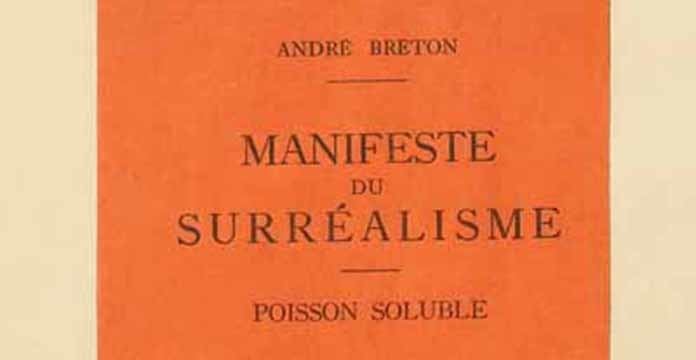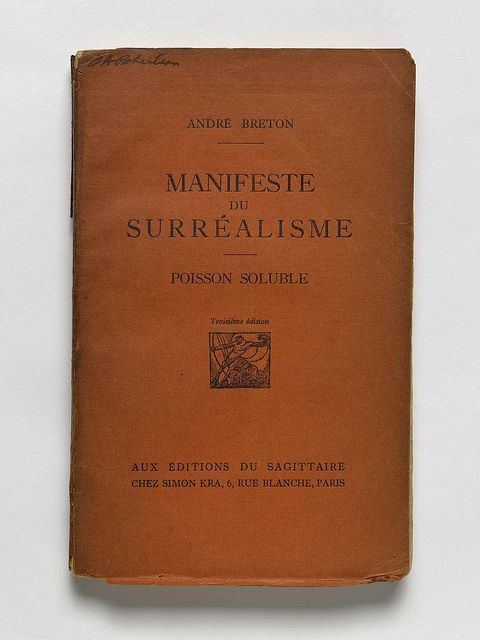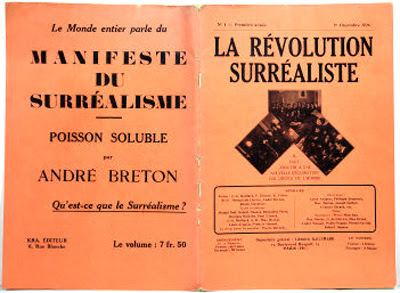Country Belgium | ||
 | ||
Books First Manifesto of Surrealism, Second Manifesto of Surrealism | ||
Asmr soft spoken reading the surrealist manifesto part 1
Two Surrealist Manifestos were issued by the Surrealist movement, in 1924 and 1929. They were both written by André Breton, who also drafted a third Surrealist manifesto which was never issued.
Contents
- Asmr soft spoken reading the surrealist manifesto part 1
- Surrealist manifesto andre breton 1924 audiobook
- First manifesto
- Second manifesto
- References

Surrealist manifesto andre breton 1924 audiobook
First manifesto

The first Surrealist manifesto was written by Breton and published in 1924 as a booklet (Editions du Sagittaire). The document defines Surrealism as:

Psychic automatism in its pure state, by which one proposes to express — verbally, by means of the written word, or in any other manner — the actual functioning of thought. Dictated by thought, in the absence of any control exercised by reason, exempt from any aesthetic or moral concern.

The text includes numerous examples of the applications of Surrealism to poetry and literature, but makes it clear that its basic tenets can be applied to any circumstance of life; not merely restricted to the artistic realm. The importance of the dream as a reservoir of Surrealist inspiration is also highlighted.

Breton also discusses his initial encounter with the surreal in a famous description of a hypnagogic state that he experienced in which a strange phrase inexplicably appeared in his mind: "There is a man cut in two by the window". This phrase echoes Breton's apprehension of Surrealism as the juxtaposition of "two distant realities" united to create a new one.
The manifesto also refers to the numerous precursors of Surrealism that embodied the Surrealist spirit, including the Marquis de Sade, Charles Baudelaire, Arthur Rimbaud, Comte de Lautréamont, Raymond Roussel, and Dante. The works of several of his contemporaries in developing the Surrealist style in poetry are also quoted, including Philippe Soupault, Paul Éluard, Robert Desnos and Louis Aragon.
The manifesto was written with a great deal of absurdist humor, demonstrating the influence of the Dada movement which preceded it.
The text concludes by asserting that Surrealist activity follows no set plan or conventional pattern, and that Surrealists are ultimately nonconformists.
The manifesto named the following, among others, as participants in the Surrealist movement: Louis Aragon, André Breton, Robert Desnos, Paul Éluard, Jacques Baron, Jacques-André Boiffard, Jean Carrive, René Crevel and Georges Malkine.
Second manifesto
In 1930 Breton asked Surrealists to assess their "degree of moral competence", and along with other theoretical refinements issued the Second manifeste du surréalisme. The manifesto excommunicated Surrealists reluctant to commit to collective action: Baron, Desnos, Boiffard, Michel Leiris, Raymond Queneau, Jacques Prévert and André Masson. A prière d'insérer (printed insert) published with the Manifesto's release was signed by those Surrealists who remained loyal to Breton and who have decided to participate in a new publication titled Surrealism at the Service of the Revolution. Participants, and thus loyal Surrealists, included Maxime Alexander, Louis Aragon, Joe Bousquet, Luis Buñuel, René Char, René Crevel, Salvador Dalí, Paul Eluard, Max Ernst, Marcel Fourrier, Camille Goemans, Paul Nougé, Benjamin Péret, Francis Ponge, Marco Ristitch, Georges Sadoul, Yves Tanguy, André Thirion, Tristan Tzara and Albert Valentin.
Desnos and others thrown out by Breton moved to the periodical Documents, edited by Georges Bataille, whose anti-idealist materialism produced a hybrid Surrealism exposing the base instincts of humans.
